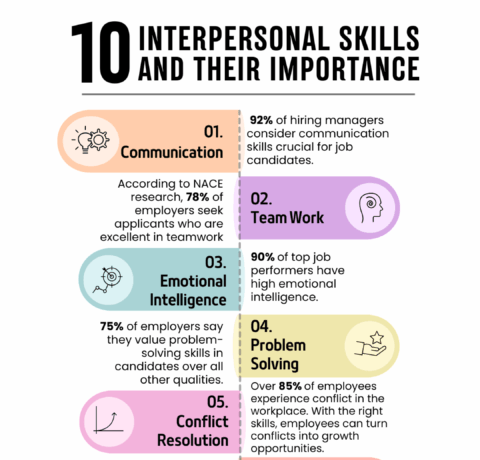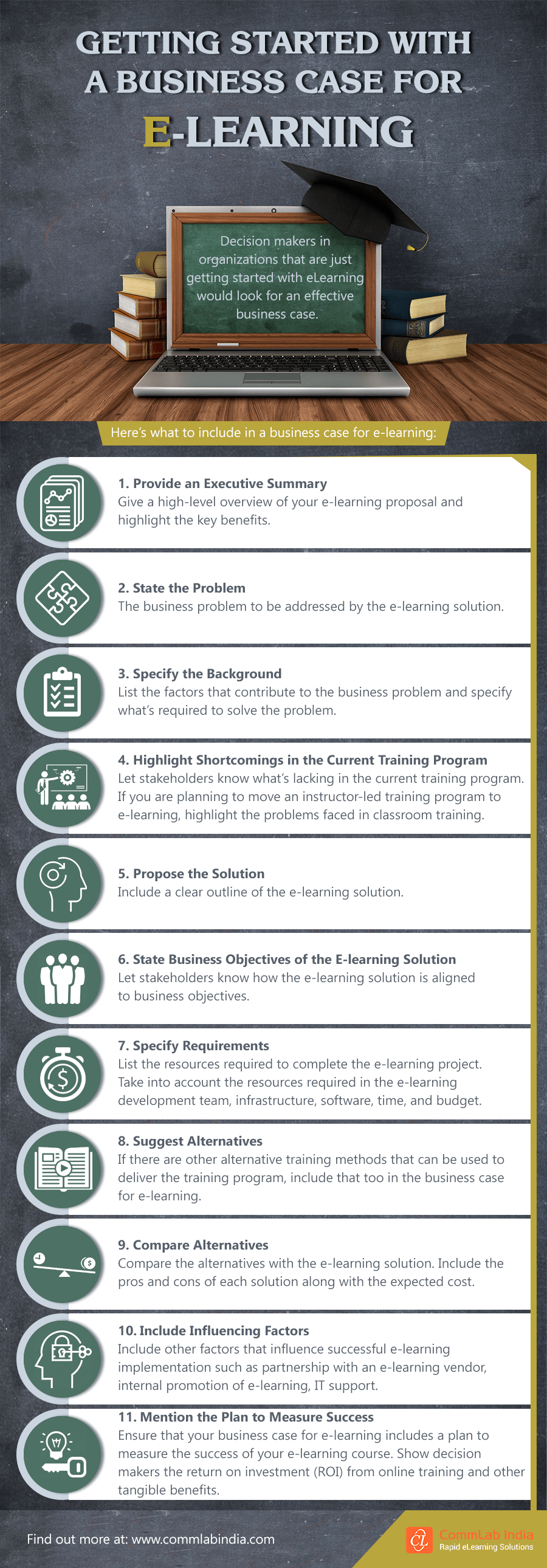Getting Started With A Business Case For eLearning—Infographic
Here's what to include in a business case for eLearning.
1. Provide An Executive Summary
Give a high-level overview of your eLearning proposal and highlight the key benefits.
2. State The Problem
State the business problem in order to be addressed by the eLearning solution.
3. Specify The Background
List the factors that contribute to the business problem and specify what's required to solve the problem.
4. Highlight Shortcomings In The Current Training Program
Let stakeholders know what's lacking in the current training program. If you are planning to move an Instructor-Led Training program to eLearning, highlight the problems faced in classroom training.
5. Propose The Solution
Include a clear outline of the eLearning solution.
6. State The Business Objectives Of The eLearning Solution
Let the stakeholders know how the eLearning solution is aligned with the business objectives.
7. Specify The Requirements
List the resources required to complete the eLearning project. Take into account the resources required in the eLearning development team, the infrastructure, software, time, and budget.
8. Suggest Alternatives
If there are alternative training methods that can be used to deliver the training program, include them too in the business case for eLearning.
9. Compare Alternatives
Compare the alternatives with the eLearning solution. Include the pros and cons of each solution along with the expected cost.
10. Include Influencing Factors
Include other factors that influence successful eLearning implementation, such as a partnership with an eLearning vendor, internal promotion of eLearning, IT support.
11. Mention The Plan To Measure Success
Ensure that your business case for eLearning includes a plan to measure the success of your eLearning course. Show the decision-makers the Return On Investment (ROI) from the online training and other tangible benefits.







You can adjust your cookie preferences here.